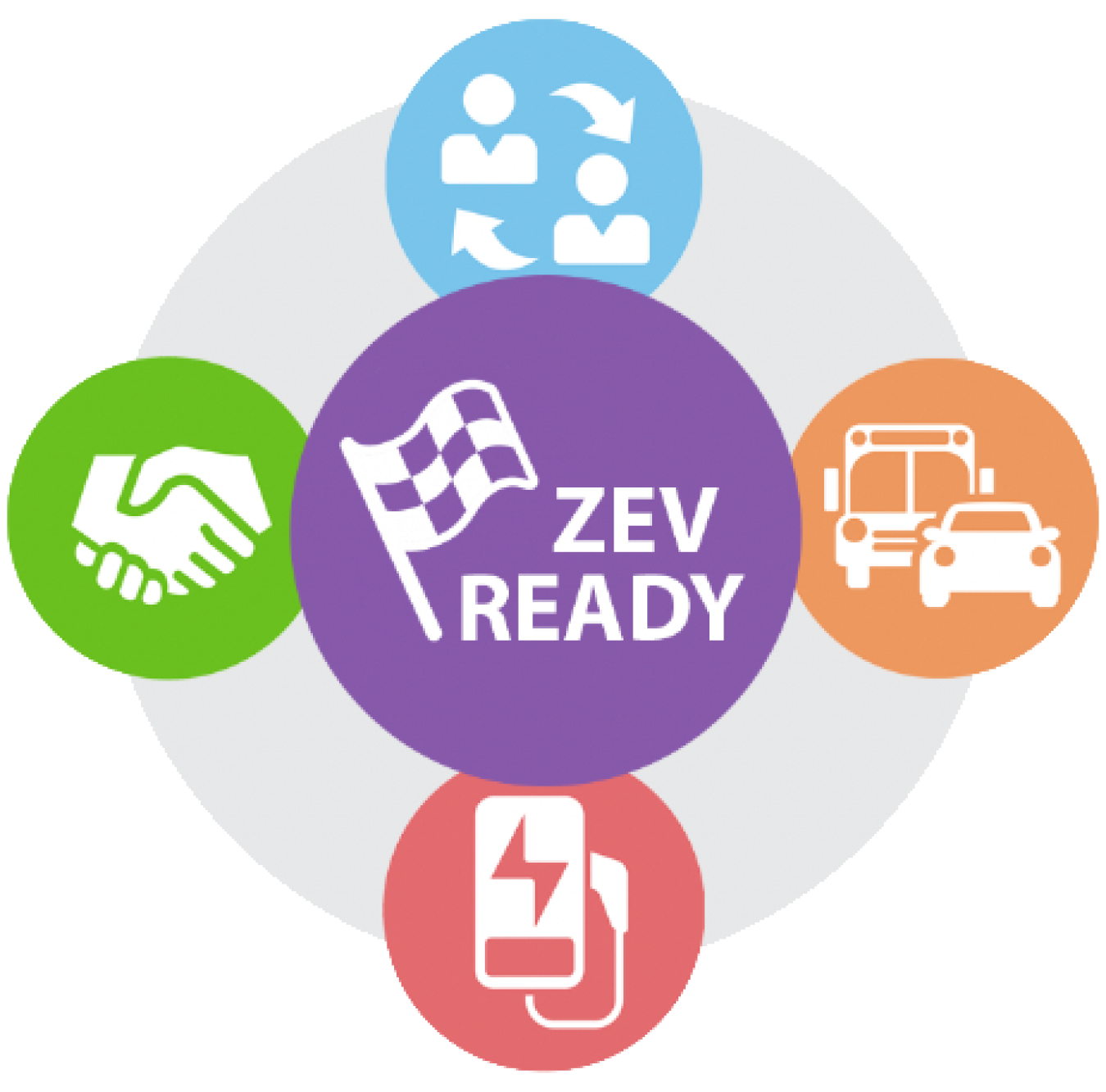Capturing and reporting zero-emission vehicle (ZEV) and electric vehicle supply equipment (EVSE) data is an important component of the Federal Energy Management Program's (FEMP's) site-level federal fleet electrification process. This page details the fleet data collection and reporting requirements pertaining to ZEVs and EVSE, including the vehicle-level data (VLD) reporting in the Federal Automotive Statistical Tool (FAST).
Annual Vehicle-Level Data Reporting in FAST
All federal fleets are required to report VLD to the U.S. Department of Energy (DOE) and General Services Administration (GSA) through FAST for each fiscal year (FY) beginning from October 1 through mid-December following each fiscal year. Agency headquarters fleet managers report each individual vehicle as a separate entity accompanied by the vehicle's attributes and operational information. These data elements include mileage, costs, fuel consumption, vehicle type, fuel configuration, garage location, acquisition or disposal information, and ownership type. These VLD reported in FAST are used to evaluate compliance with federal sustainability requirements and the metrics on the Office of Management and Budget (OMB) Sustainability Scorecards.
Fleet managers are responsible for the accurate measurement and reporting of electricity used in ZEVs. Electricity consumption data is typically managed using the following sources.

Telematics data that captures electricity used by each vehicle. This is the easiest and most accurate method.

Estimates of electricity consumption using vehicle mileage in conjunction with a calibrated vendor-provided vehicle efficiency factor (such as 3.6 miles/kWh) can be used to calculate electricity consumption. For example, the Nissan Leaf, a BEV available from GSA, has a vehicle efficiency factor (provided by the Environmental Protection Agency) of 34 kWh per 100 miles. Therefore, the estimated electricity consumed during an annual use of 12,000 miles would be 4,080 kWh.

On-site EVSE with built-in data collection and management systems that capture electricity transaction data for each EV charging session can be used to measure electricity use.

Credit card transaction data for charging sessions at public and non- agency charging stations. For ZEVs that are "wet-leased" with GSA, data on electricity used to charge these EVs at public and non- agency charging stations off-site is captured in the Fuel Use Report of GSA's Reports Carryout application. For other vehicles that use agency fleet cards, agency manages will have access to EV electricity transaction data from the credit card vendor’s data system. GSA and other fleet card data will provide detail of each electricity use transaction by each EV, typically including kilowatt-hours used and cost.
Federal fleet managers will need to consider how to balance the efficiency of data collection with its costs in determining the best method for its vehicles and facilities. Additionally, if fleets choose to rely on on-site EVSE with built-in data collection, they should complement that information with data from public EVSE to provide a complete picture of electricity consumption.
Year-End EVSE Reporting in FAST
Agencies are required to annually report information on each of their EVSE and other fueling centers in FAST by November 15 each year. This reporting requirement is in support of the Fixing America's Surface Transportation Act of 2015 (42 U.S.C. Sec. 6374), which authorizes agencies to install, operate, and maintain electric vehicle charging stations for use by federal employees and other authorized users, and the Energy Independence and Security Act (EISA) Section 246 requirements to install renewable fuel infrastructure at federal fleet refueling centers (42 U.S.C. Sec. 17053(a)).
Annual Reporting Timelines
This section presents the various reporting requirements used to monitor agency progress toward meeting federal fleet sustainability mandates, including the acquisition of ZEVs and deployment of EVSE.
November
Fueling Center and EVSE Inventory Reporting. Agencies report in FAST on their fueling stations, providing the agency’s status in installing renewable fuel pumps (i.e., alternative fuel infrastructure) and EVSE. All federal agencies subject to EISA Section 246 requirements provide DOE with a list of all federal fleet fueling centers that are within their jurisdiction. Additionally, agencies are required to report information on EVSE for fleet use and employee workplace charging.
December
Annual FAST Reporting. Many of the annual reporting requirements use the annual inventory, cost, and fuel use data that is entered into FAST at the beginning of each fiscal year.
January
OMB Scorecards. By statute (42 U.S.C. Sec. 8253(f)(9)), OMB is required to publish annual agency progress and scorecards on federal agency performance on energy efficiency and sustainability, including sustainability metrics for the federal fleet.
February
GSA Customer Acquisition Module (CAM) Entries. The GSA CAM is an ordering tool accessed through Fleet Drive-thru that allows customers to gain consensus on the replacement of leased vehicles. Fleet selections due to agency headquarters by mid- February, and agency headquarters must complete approvals by mid-March.
August
OMB Circular A-11 Report. All executive branch agencies funded through OMB's Circular A-11 budgeting process are required to submit motor vehicle fleet budget information using FAST. Timing of this submission is determined by OMB and is typically due by the end of August each year. This submission includes forward-looking fleet projections for acquisitions, disposals, and fleet costs covering a three-year period as well as the agency's fleet management plan and budget narrative.


